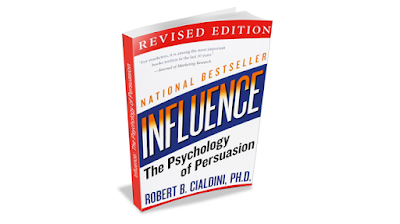
Almost 42% of Americans plan to shop mostly online in 2012, according to the “2012 Shopping Outlook” survey by PriceGrabber. Another 45% plan to make most of their purchases through a combination of online, brick-and-mortar, and mobile shopping,
while just 12% plan to only shop in actual stores.
E-commerce, also known as online shopping, is becoming more widespread as more consumers look to the Internet for purchasing decisions. Consumers can find a wider variety of goods, often at more competitive prices, than they would at their local brick and mortar retailers. According to Understanding Online Shopper Behaviors by Forester Research, E-commerce business-to-consumer product sales totaled $142.5 billion in 2011, representing about 8% of retail product sales in the United States.
However, because shopping online requires much less commitment than shopping in a store – consumers can fill up a virtual shopping cart from the comfort of their living rooms at any hour of the day – as many as 95% of online shoppers don’t “convert” (or purchase) from a website on their first visit. Businesses implement e-commerce marketing strategies hoping to solve this issue, easing consumer decision making online.
Once buyers are ready to purchase, what will make them choose to buy from the online shop above all the other options? Many new e-commerce store owners believe that an eye-catching, easy-to-use website and competitive pricing are more than enough. However, e-commerce websites need much more than this to stand apart from the competition. They need to know how to increase their online presence, convert their web traffic into paying customers, and drive repeat purchases.
Without a strategic e-commerce marketing plan, a business’s website will fall in among the thousands of other companies selling similar products for similar prices. Marketing strategies like search engine optimization, pay-per-click marketing, email marketing, and traffic analysis can help an e-commerce website gain – and keep – shoppers.
What is E-commerce marketing ?
E-commerce marketing is the practice of guiding online shoppers to an e-commerce website and persuading them to buy the products or services online.
E-commerce marketing can include practices like:
Search engine optimization to help a website to rank higher in organic search engine listings
Affiliation with better-known websites through referral marketing or banner advertising
Retention of current customers through email marketing
While there are many similarities between marketing an e-commerce website and marketing a brick and mortar store, e-commerce marketing involves some unique challenges and opportunities (See also Brick-and-Mortor Marketing). Online, consumers don’t feel invested in a shopping venture the way they would if they’d gotten in their car to visit a physical location, because visiting an e-commerce website requires no more effort than a mouse click.
Additionally, e-commerce businesses don’t have opportunities to draw customers in with the physical enticements of a well-run store – there is no soft music, relaxing smell or helpful, well-dressed salesperson to help them make their choice.
On the flipside, however, shopping online is faster, easier and more private, which makes it very appealing to tech-savvy consumers. With a fully-functioning, easy-to-use website and effective customer engagement tools, an e-commerce website can make shoppers want to complete their transactions online. This is financially beneficial, as e-commerce businesses require much less overhead to run successfully.
Still, many e-commerce marketing companies use this lack of investment in online shopping to justify high spending on increasing traffic to the website. Often, if a marketing firm puts thought into their e-commerce marketing strategy, this high spending may not be necessary.
Who Employs E-commerce Marketing ?
All manner of retailers – including clothing stores, fabric wholesalers, furniture manufacturers and technology companies employ e-commerce marketing. Sometimes, brick and mortar retailers make conscious decisions not to build e-commerce websites, because they want the experience of visiting their store to be a unique, elite experience. These retailers are often not interested in expanding their businesses or selling for a competitive price.
However, any other business that is interested in increasing their sales should not only build an e-commerce website, but put thought and effort into marketing it effectively. For example, Door-to-Door Organics is a business that partners with local farmers to deliver fresh, organic produce to customers’ doorsteps. While fresh produce is not the first product that comes to mind for an e-commerce website, the usability and intuitive functionality of the website contributes to Door-to-door Organics’ success (See also Marketing Organic Products).
A famous Marketing campaign:
Amazon.com began in 1994 as an online bookstore. While this is how they are still best-known, the e-commerce website now sells everything from clothes, to vitamins/ to MP3s, to previously-owned electronics. Sales are made through their own suppliers, third-party vendors, and private individuals. Amazon’s reign continues because they continue to push technological boundaries (their proprietary e-reader Kindle has taken the nation by storm) and because their e-commerce platform is functional, easy-to-use, and secure.
What kinds of customers are effectively marketed to with
E-commerce Marketing ?
Young, Internet-savvy consumers are the most likely to be affected by an e-commerce marketing campaign (See also Youth Marketing). Older consumers who are not as familiar with the Internet are less likely to make their purchases online in the first place. But when they do, they are also less particular about the quality of the e-commerce website.
One thing that is universally important to e-commerce consumers is security. Because buying online necessitates the transfer of personal information including a credit card number and personal shipping address, it is extremely important to ensure that your e-commerce website takes great care with customer information. Nothing can damage an e-commerce marketing campaign and a reputation faster than a slew of stolen identities or other financial security breaches.
E-commerce Marketing priorities
Entice visitors to your e-commerce website through:
Search engine optimization
Pay-per-click campaigns
Public relations – news releases, articles and stories
Online advertising
Convert visitors into customers through:
In-site promotions
Product discounts
Customer recommendations
Opt-in email promotions
Website usability
Encourage repeat customers through:
Quality products
Competitive pricing
Building relationships
Increasing per-customer purchases
After-sale marketing and relationship building
How is an Ecommerce Marketing plan developed and employed ?
An e-commerce marketing plan is developed by focusing on three objectives: helping new visitors to find the website, turning visitors into customers, and enhancing your website’s usability and after-sale marketing to encourage repeat visitors.
Enticing visitors and converting visitors work hand in hand. One without the other dramatically reduces the opportunities for creating new customers. A website needs to entice new visitors to visit and then provide sufficient incentive to turn those visitors into a buying customers.
Helping new visitors find a company’s e-commerce website is largely dependent on search engine positioning and banner advertising. A successful e-commerce marketing team needs to have expertise in search engine optimization, pay-per-click marketing, social media marketing, and display advertising to reach the top of search results.
Search engine optimization, better known as SEO, is one of the most critical parts of e-commerce marketing. It is based on special algorithms that analyze the instances of specific keywords on your website. Because users navigate the Internet through search engines like Google, these results play a large role in the success of your website. A good SEO campaign can position your e-commerce website to rise to the top of the Google rankings. For example, Googling “pretty yarn” brings up Dragon Tale Yarns sold by the e-commerce branch of Earth Guild, a store based in North Carolina, as the fourth result. Earth Guild is not a large, well-known craft store, nor does it have a particularly appealing web presence. What it does have is excellent SEO – because it shows up so quickly in the search results, it likely experiences much more traffic than its competitors.
Pay-per-click advertising operates similarly to SEO since it is based on keywords. However, whereas search engine optimization works organically (meaning that a marketing firm doesn’t have to pay for it), PPC results are the results that show up in yellow boxes on Google. Marketing campaigns pay to be represented by specific keywords, and owe money each time a user clicks on one of these ‘sponsored’ links. PPC and SEO campaigns often work very well together, by covering a variety of organic and paid keywords. (See also Pay-per-Click Marketing)
Social media marketing can be very important to e-commerce websites. By creating an effective Facebook business page and enticing potential customers to ‘like’ your page with exclusive offers and discounts, you will not only gain immeasurable word-of-mouth advertising through the network, but will establish yourself as a trustworthy, reputable Internet business.
Display advertising can be intimidating to smaller Internet retailers, but it has been found to be very worthwhile. By buying small banner ads on related blogs, message boards and other websites, you can showcase your business in front of people who wouldn’t have found it otherwise.
Effective, strategic marketing is sometimes enough to attract visitors to a website, but the work doesn’t end there. Next, an e-commerce marketing campaign will convince them to purchase the available product or service. Website visitors become customers because of their experience on your website. While the quality and pricing of the product is important, the user experience is just as important. The domain name should be easy to spell, it should load quickly, and it should look good and be easy to read.
On the product pages, it is essential that all offerings are easy to find, easy to understand, and are accompanied by extensive details and photos. Online shoppers are drawn to purchase if they know right away how much your product and shipping costs, if they can see multiple views of a product, zoom in on your photos, read reviews from other customers, and save products they’re considering in a shopping cart. All of these actions mirror the way they shop in a brick and mortar location.
Repeat customers are earned through customer service. Year after year, Zappos.com, an online retailer that specializes in shoes, ranks very highly as a place that customers would recommend to friends and use the next time they need to purchase shoes. The reason for this is excellent customer service. Zappos offers free shipping both ways, no-questions-asked returns and exchanges for a full year, video descriptions, and comprehensive reviews of almost every product. Additionally, they employ a staff of customer service representatives who handle every interaction with a lighthearted expertise. (See also Sales Representatives)
What types of of careers work with Ecommerce Marketing strategies ?
Because e-commerce marketing is a digital marketing field, a career in e-commerce marketing requires marketers to not only have a marketing background, but also a firm understanding of the ever-changing world of social media, search engine analytics, and broad-based online marketing. An effective e-commerce marketing team will be made up of individuals who are extremely comfortable with technology trends and have the creativity to let your e-commerce website stand out from the crowd.
Marketing Manager
Entry level: $60,230
Experienced: $155,050
SEO Specialist
Entry level: $27,989
Experienced: $60,247
Webmaster
Entry level: $29,701
Experienced: $73,873
*Source: United States Bureau of Labor Statistics
Marketing Managers:
What do they do?
A successful e-commerce marketing campaign should be led by a marketing manager with the knowledge and training necessary to manage and effectively strategize campaign activity. Typically, marketing managers oversee all activities within a company’s marketing, advertising, and promotional department. They establish brand guidelines and growth strategies, evaluate customer needs, and tweak marketing plans dependent on success.
Education and experience
Most marketing managers hold at least a bachelor's degree in marketing or a related major like communication, advertising or business. Marketing managers generally begin in entry-level marketing positions and work their way up the career ladder.
SEO specialist:
What do they do?
SEO Specialists ensure that their websites are optimized to attract and engage the largest amount of applicable visitors who will eventually convert into customers. They do so by making sure that the website’s branded content across all platforms leads Internet users to their offerings by building search engine rank, reputation and traffic.
Education and experience
A Bachelor’s degree in marketing is the best path to a career in SEO, and a background in programming can also be extremely useful. Beyond formal education though, individuals who want to pursue an SEO career should continue their training individually by staying up-to-date on the ever-changing world of SEO.
Webmaster:
What do they do?
A webmaster collaborates with the e-commerce marketing team to develop and maintain the look and feel of a website. He or she is responsible for the usability and functionality of a website day-to-day, and ensures that it is performing at the best possible level. By monitoring traffic and customer experience, the webmaster can adjust expectations and improve performance.
Education and experience
Beginning a career as a webmaster generally requires a Bachelor’s degree in business or computer programming, as well as a working knowledge of programming language like HTML. Usually, a webmaster will have a few years of experience in the programming industry before becoming responsible for a website.


























